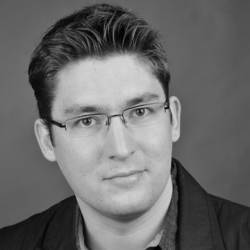
Search algorithm designers have in recent years worked out ways for computers to identify experts in any particular area of knowledge. But for users who’d like those experts to actually answer their questions, identifying them is just the first step. It’s also helpful to figure out which experts they can get in touch with.
While current expert-finding methods provided the best expert in six out of 10 searches, a new user-oriented method finds the best one nine times out of 10, according to the researchers.
"In a real-world search, the user is a very important element in this process," says Krisztian Balog, a post-doctoral researcher at the Norwegian Institute of Science and Technology. With Elena Smirnova of INRIA Sophia Antipolis, he wrote "A User-oriented Model for Expert Finding," which won the best paper award at April’s European Conference of Information Retrieval.
Their model looks for social connections between the user performing a search and the identified experts. It’s built on the assumption that experts more closely connected to the searcher will be easier to contact, and thus more useful.
Smirnova and Balog tested their model using the public database of researchers and teachers at Tilburg University. The computer identified and ranked people’s expertise by examining course descriptions, published papers, research descriptions, and personal home pages. If the user was also part of their database, the model could calculate the difference in the user’s and the expert’s knowledge levels; the best expert was considered to be the person with the most additional knowledge to impart. If the search engine had no information about the user, it based its result solely on the time required to reach the expert.
To measure that time, the model looked at whether the user and expert had been co-authors, and ranked how close they were both geographically and in the organizational structure. Any one of those social distance measures improved the search results. The biggest improvement came from combining co-authorship and geography.
The work is applicable to other sources of expert ranking and other ways of measuring connections. The LinkedIn service, for instance, would supply both. Balog says this is an instance of object-related search, where the user and the expert are the objects and expertise is the linkage.
"Social relationships can play a critical role in determining whether questions are ultimately answered," says Ryen W. White, a researcher at Microsoft Research who’s worked on the company’s "IM an Expert" system, which lets people within an organization get immediate answers from colleagues. "Smirnova and Balog’s research convincingly demonstrates the value of personalizing people search."
Neil Savage is a science and technology writer based in Lowell, MA.



Join the Discussion (0)
Become a Member or Sign In to Post a Comment